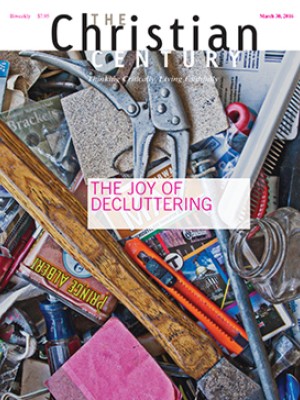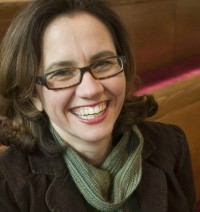Two or three at the gym

"Have you been to that new church?” a colleague asked me. “It’s really cool. They meet at a gym. You should definitely visit it.”
I nodded. “I’ve heard of it,” I said, trying not to reveal a lack of interest. The truth is that I could name a few worshiping communities that have started in gyms.
I’m hesitant about the idea partly because I don’t have a passion for athletic vigor. I jog a 20-minute mile, but I typically give myself a gold star just for showing up. I have an aversion to participating in competitive sports because I lose at anything that requires expensive footwear or Lycra.
I also struggle with the thought of attending worship with my disabled father in a church that’s unwilling to meet the standards of the American Disabilities Act. I’m impatient with an absence of ramps and not being able to maneuver a wheelchair to the fellowship hall. If the bar is that high, is it really church?
Read our latest issue or browse back issues.
Yet I’m fascinated by these niches. New communities spring up at coffeehouses, on Habitat for Humanity work sites, and at 5k races. Nontraditional congregations often start wherever people gather. The steeple downtown does not designate the only place where God shows up and worship occurs.
But what makes one of these gatherings a church as opposed to something else? Some would say that when two or three gather in God’s name it’s church.
But there must be more to it. When does the disparate group of people who thank God for strength and endurance in a race become a worshiping community? When does a gathering of friends sipping coffee become a congregation? Has the meaning of church changed? Do we have identifiable practices? Have we let go of certain things?
Some denominational bodies would label a gathering church when the congregation can afford to pay a pastor. That response may make practical sense, but it’s hardly robust theologically. Making financial sustainability a mark of the church makes church unattainable to populations at lower socioeconomic levels and disqualifies congregations that don’t operate in the black.
I talked with J. R. Daniel Kirk, who has written on Pauline Christianity and attends two churches on Sundays: a traditional Reformed Church in America congregation and a house church. Kirk has shifted his definition of church from what we do to who we are together. “Church is the people I’m trying to follow Jesus with and people who are following Jesus with me. It’s the intentional community of people who walk in self-giving love for each other while trusting themselves to the care of God.”
Jan Edmiston, who works for the Presbytery of Chicago and blogs on the 21st-century church, said that she approaches the issue by thinking about what the church is not. “It’s not a club, even though there are social relationships. It’s not a learning community, even though there is learning. It’s not a not-for-profit, although there might be outreach to serve the community. Church is a community seeking purpose, and for followers of Jesus, it’s in the name of Christ.”
When I asked Edmiston what it means to seek purpose, she talked about practices. “Churches need to address what breaks God’s heart in the neighborhood,” she said. Is it poverty or hunger? Is it homeless gay teens? Church can address this by praying, focusing, and being a community for those people.
Edmiston also pointed to authentic hospitality, which goes beyond placing a designated greeter in the foyer and involves “welcoming people who make us feel uncomfortable.” She explained that a church in the 21st century understands that a “building is a tool for ministry and not a monument of past glories.”
As I listened to Kirk and Edmiston, the word church kept breaking down and changing. I don’t want to define church in order to impose an authoritative meaning that excludes certain groups or practices. But I want our definitions and thinking to mirror what actually happens. The word church is important and I want it to signify something.
Yet while I’m eager to point to something visible, Kirk and Edmiston keep returning to the idea of a community that is intentional, seeks purpose, and follows Jesus. Their words remind me of that distinction made during the Reformation between the visible and the invisible church. The visible church is an external community established by an institution; the invisible church is gathered by God, through the Holy Spirit.
In this time of institutional instability and ecclesial experimentation, perhaps I need to let go of my quest to define church as something visible. Maybe this moment is like the Reformation in that the invisible community is more important than our institutional structures and definitions. Quite possibly that means the Holy Spirit can move among the Lycra, sweat, and endorphins of the gym church.






